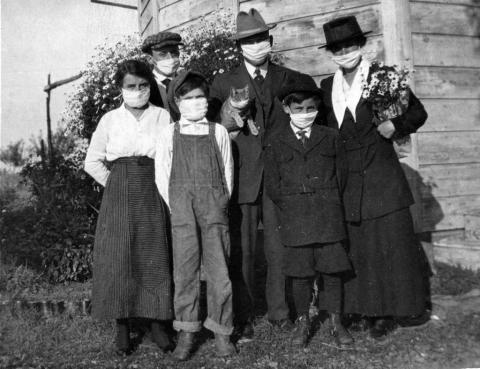Kristy Wilson Bowers: Social Distancing Has a Long History
As a historian of medicine, I have been studying pandemics and the responses to them for nearly 25 years. More recently I have been teaching about historical epidemics and public health in HIST 2590 Epidemics and Society. When I taught this class just a few months ago (Fall 2019), I never imagined that all the issues we were discussing would become so immediately relevant to current events in such a short time. Like everyone, I hope that this current pandemic will burn out soon so I can teach this next spring as a past event and not an ongoing on.
Experiencing a pandemic firsthand has given me a new appreciation for the lived experience of people in the eras I’ve studied. I work with very old documents and it is sometimes easy to overlook how people must have felt about the ways they were being regulated. The imposition of restrictions to protect the health of communities in times of disease date back to antiquity. Many current ideas of how to respond to epidemics are often traced to the Black Death, the pandemic of bubonic plague that raced around the globe in the late 1340s and early 1350s. We know best the responses of Europeans during this time, especially the Italian city states which gave us the term quarantine (from the Italian for forty (days) – quaranta (giorni)). But in recent years historians, working in tandem with scientists, have found that this was not just a European epidemic, but an early global pandemic, as shown in this article by Monica H. Green. The Black Death pandemic has been harkened back to frequently by writers lately, comparing “medieval” responses to plague and modern ones to COVID-19. As historian Guy Geltner argues in his recent essay, medieval responses, or as he terms them “non-biomedical” responses, are in fact the best measures we have to use right now. Isolation, quarantine and social distancing are very old and proven methods for limiting the spread of diseases for which one has no remedies. As this National Geographic article shows, keeping people home and preventing groups from gathering was very successful when used during the 1918 influenza pandemic.
But one other thing that history shows us is the ongoing tensions inherent in public health measures. What is best to protect the community is often resisted by the individual, for it is the individual who must make sacrifices. Long before the Enlightenment codified ideas of individual rights and freedoms, people were resistant to being told they could not move around from town to town, conduct trade, visit their families. Today, people are similarly frustrated with being told to stay home. If you are tired of being cooped up, consider the case of Mary Mallon, better known as “Typhoid Mary.” The first person found to be a healthy carrier of typhoid unknowingly infected her employers through her cooking. She never in fact believed she did, as she herself was never sick. Mary ended up sentenced to live in isolation on North Brother Island, despite the fact that she was perfectly healthy. For the good of the public’s health, she lost her freedom. You can watch a documentary about her from PBS/Nova.
I feel enormously fortunate to have the historical view to call upon when I am frustrated with my own current situation. While I would much prefer to be teaching and working on campus rather than remotely, I appreciate all the tools we have today to keep ourselves connected to others. We are all members of many communities, intellectual as well as physical, which can help sustain us through difficult times.
Kristy Wilson Bowers is Assistant Professor of History at the University of Missouri. She is the author of Plague and Public Health in Early Modern Seville (University of Rochester Press, 2013). More information about her and her work can be found at https://history.missouri.edu/people/wilson-bowers.
